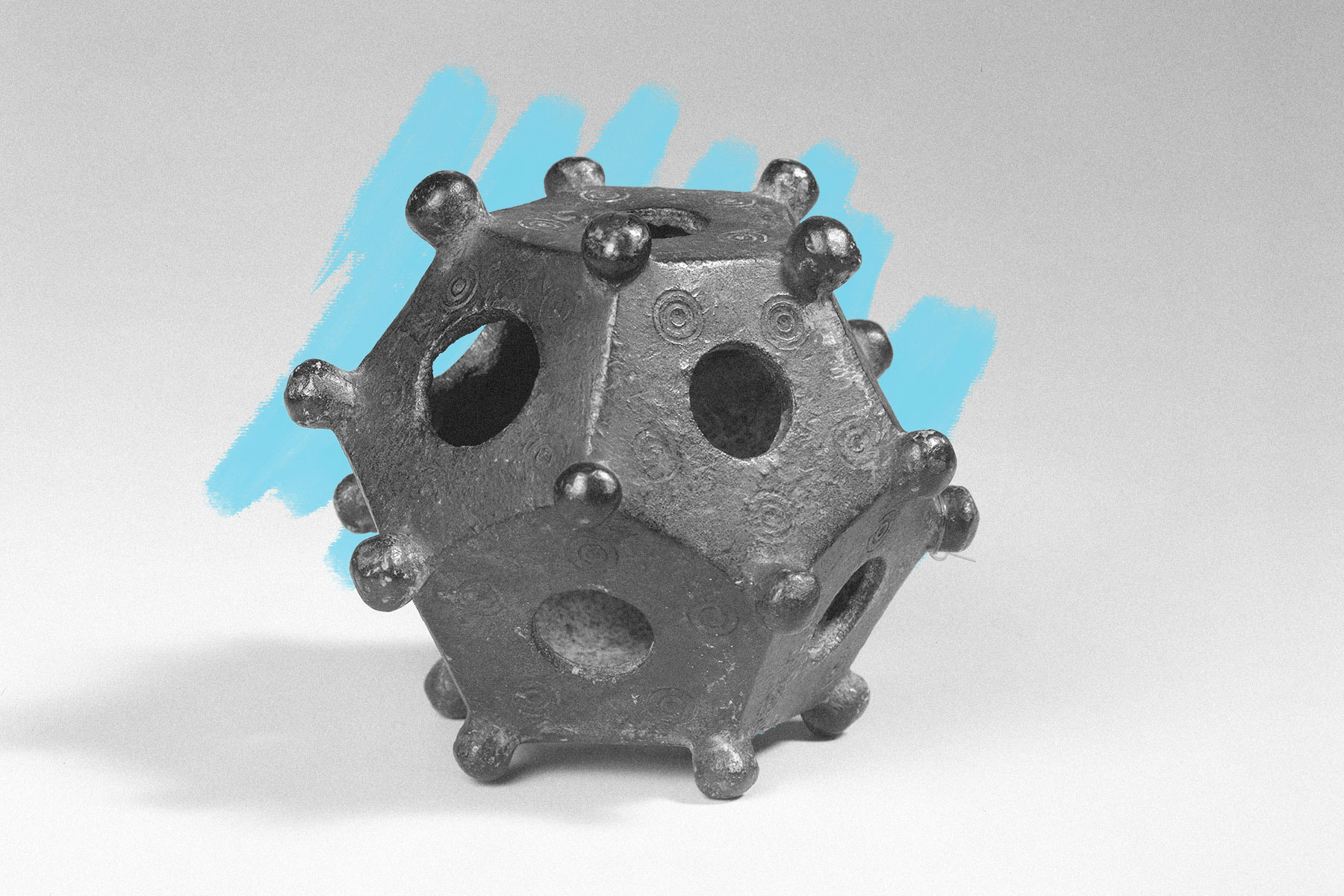| A ncient Rome is one of the most well-studied civilizations on Earth, but there are some aspects of the culture that still puzzle researchers today. Among the oddest mysteries the Romans left behind are small, hollow dodecahedra — 12-sided objects — with no apparent purpose. These dodecahedra are usually about the size of a human fist or a baseball, although the ones that have been found by archaeologists range from 1.5 inches to 4.5 inches tall. Each pane typically contains a differently sized hole between .2 and 1.5 inches wide, and each corner is marked by a spherical stud. The first one was unearthed in 1739, and more than 100 have been discovered since then, mostly around ancient Britain, Gaul, and Roman Germany. |
|
| Despite having nearly 300 years to figure it out, archaeologists still aren't even close to sure what the Gallo-Roman dodecahedra are for, but they do have some wildly disparate ideas. The objects could have been used for a game that's disappeared from the historical record, for detecting counterfeit coins (some of them were even discovered in coin hoards), or as surveying tools. Names for the zodiac were found on one dodecahedron, leading some to believe that they could be used in astrology. Other ideas include a musical instrument, candle holder, child's toy, calendar, or a gauge for water pipes. |













No comments:
Post a Comment